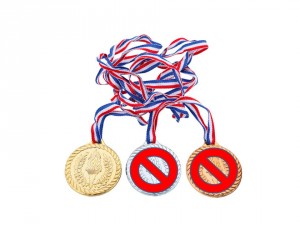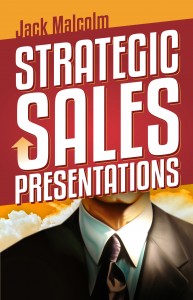The short answer is mostly yes, and if you’re using average presentations techniques with executive audiences, it’s like bringing a BB gun to hunt elephants. Senior level executives are not average; they think about different things, and they even think differently from the average audience member.
Sophisticated audience: They have heard thousands of sales pitches, whether from salespeople or from their own subordinates. They’ve heard all the clichés and standard phrases, and have evolved highly sensitive BS detectors. Avoid fluff: all those suggestions that you rely on stories and flashy visuals, or appeal to their “lizard brains” may just make them more suspicious. I’m not telling you to leave out some of those compelling elements, but if you plan to sell the sizzle instead of the steak, you’d better be sure there’s prime beef underneath it all.
They also have learned how to get to the heart of the matter very quickly, but they will respect and appreciate someone who does it for them by simplifying and clarifying their message, so they don’t have to. Make the package easy to open.
Broader vision: If you’re presenting a pet project internally, it’s easy to get passionate about it and get so wrapped up in it that you ignore the big picture. Executives appreciate presenters who think above their pay grade and know how their proposal fits into the big picture. The catch is that you don’t have the same high-level view they have, so you have to pay close attention to their questions during and after your presentation for clues and make adjustments accordingly. They also have a broader set of stakeholders to keep happy than you have, so make sure you’ve thought about how your proposal affects them as well.
Time misers: The higher you are in an organization, the less your time is your own, so you resent anything that wastes it. Studies have shown that powerful people actually perceive time differently, so the old saying, “be bright, be brief, be seated” especially applies when presenting at this level. And it’s not just about being concise; make sure you give them the bottom line up front. When they know what you’re proposing and why, it helps them organize their thoughts around your message, and can often lead to quick decisions. When they’ve heard enough, they will let you know. Pay attention to them and don’t talk past the close.
Always plan for your presentation to be shorter than the time allotted to it; you’ll probably get interrupted many times (that’s a good thing), and no one ever complains about a presentation being too short.
They are interested in different things: Another old saying in sales is, “You get sent to who you sound like.” They want to hear about how you are going to help them increase profits, solve problems, or improve processes. If you spend your time during the presentation talking too much about product specifications, they’ll tune out. If you’re a salesperson, they don’t want to sit through seventeen slides that tell your corporate story—they want to hear their story and how you will help them have a happy ending. Be flexible: if you’re using slides, keep the text to a minimum on the main ones, but have detailed ones as backup to address specific expected questions.
Having said this, it’s also possible to go too far, though, because in some ways, they are the same as anyone else. Don’t try to sound more intelligent by using bigger words than you’re used to. Trust me[1], it won’t make you sound smarter, especially if you mispronounce it.
In summary, you should always consider the needs of your audience and tailor your approach accordingly.
[1] Actually, you don’t have to trust me. Here’s a study that backs it up: http://personal.stevens.edu/~ysakamot/730/paper/simple%20writing.pdf
Good ideas, like good products, rarely sell themselves. Someone needs to present them in the right way to the right people at the right time, and the three people mentioned in the title above have all had important and useful things to say about how to do that.
In my new book, Strategic Sales Presentations, I’ve made it a point to search for the best ideas from history, science and business and combine them into a unique and powerful approach to strategically sell ideas to high-level decision makers. It’s a skill that will propel your career, regardless of whether you’re officially in sales or just want to sell your ideas to others.
Aristotle was the original—and still the best—presentations trainer in history. Classical Athens was a direct democracy, which meant that if you wanted to get something done, or defend yourself from a lawsuit, you had to speak directly to an assembly of citizens. There were no lawyers, lobbyists of PowerPoint; it was just you and your eloquence facing an audience as large as 10,000 strong, so it was important to know how to get attention and sway an audience.
Fortunately in those days you could turn to one of the first presentations trainers. Aristotle wrote the best training manual for speakers—The Rhetoric. His major contribution, which still applies today, is the proper use of three principal avenues of persuasion, logos, pathos, and ethos. He realized that the persuasiveness is a function of both the message and the messenger. The strength of the message depends on appealing to the listeners’ hearts and minds through logic[1] and emotional connection, and the credibility of the messenger is earned by who they are and what they do. In the book you will learn how to choose the right mix of solid evidence, present it compellingly and engagingly, while personally conveying executive presence and credibility.
Fast forward a couple of millennia, and we can use modern science to further refine some of Aristotle’s ideas. Daniel Kahneman, the only psychologist to ever win the Nobel Prize in economics, teased out the complex relationship between two main modes of thinking that audience members apply when listening to a presentation. System 2 is the slow, logical deliberative process that we all admire as the ideal of business decision-making, and System 1 is the rapid, intuitive and unconscious undercurrent of thought that exerts a powerful and sometimes overriding influence on our real-life decisions. Executive decision makers try to be exceedingly rational in making important business decisions, but even they can be influenced by how choices are framed, for example. Even they use shortcuts when the choices become too difficult. For example, Kahneman’s substitution principle states that when a question is difficult to answer (e.g. will this multi-million dollar investment return an acceptable ROI?), they will frequently substitute an easier question (e.g. do I trust this person who is telling me it will?).
Although history and science have a lot to teach us about effective presentations, no one in business will be really convinced until they see how successful business leaders embody the ideas in the book. Jack Welch and Steve Jobs are certainly on anyone’s short list of greatest business leaders of the past fifty years. They teach us that regardless of how strong your solution is, or how prestigious the company you represent, your performance during those critical moments in front of some of the toughest audiences in the world can make a big difference. Their regimen for preparing for important presentations should teach us and inspire us to put in the same painstaking and relentless effort and attention to detail they do.
Besides these important teachers, the book also contains ideas and advice from some people that I consider even more important. A lot of senior executives that I’ve had the privilege of working with have also made valuable contributions to Strategic Sales Presentations, graciously consenting to be interviewed and pass on their perspective. (Although I suspect some of them did it out of self-interest—because they’re tired of sitting through boring, mistake-filled presentations.)
The book closes with a reminder that greatness as a presenter is within your reach, if you’re willing to put in the work. Because he started it, Aristotle also gets the last word in the book: “We are what repeatedly do. Excellence, then, is not an act but a habit.”
[1] Since he also wrote the first book on logic, I guess you could say he was a full-service training provider.
 I love watching the Olympics and I plan to be glued to the television for the next couple of weeks. Regardless of the sport, the sheer drama of watching someone lay it all on the line for their one shot after years of sacrifice, discipline and hard work, is absolutely irresistible. At such times, the slightest difference in preparation, the smallest lapse in focus, and difference in performance can mean the difference between glory on the podium or at least another four years of obscurity.
I love watching the Olympics and I plan to be glued to the television for the next couple of weeks. Regardless of the sport, the sheer drama of watching someone lay it all on the line for their one shot after years of sacrifice, discipline and hard work, is absolutely irresistible. At such times, the slightest difference in preparation, the smallest lapse in focus, and difference in performance can mean the difference between glory on the podium or at least another four years of obscurity.
Although not everyone can be a winner, at least Olympic athletes have the luxury of three possible medals. When you are facing a critical moment in a strategic sales presentation—one that will make or break your year, or even affect your career, there is no glory in second place. Your stakes may be personally just as high as those facing an athlete, and you only have one shot to get it right. Your preparation, focus and performance are the keys, not to guarantee victory, but to deserve it.
Ask yourself, have you done everything possible to deserve success?
In researching and writing my new book, Strategic Sales Presentations, I interviewed dozens of senior executives, read hundreds of books and articles on selling, speaking and psychology, and drew on my own thirty years of selling and speaking experience. Despite all these numbers, just four themes kept showing up again and again.
Outside-In Thinking
Think from the customer’s point of view. You are not the star of the presentation; your listeners are. When you practice outside-in thinking, you start from the premise that the quality of the reception is more important than the elegance of the transmission. To paraphrase the late Stephen Covey: Begin with the listener in mind. What do they know and not know? What do they need? How do they like to receive information?
When you follow outside-in thinking, your presentations will be more about them and their business than about your products, you will make your listeners the hero of your stories, and you will listen more even as you speak.





